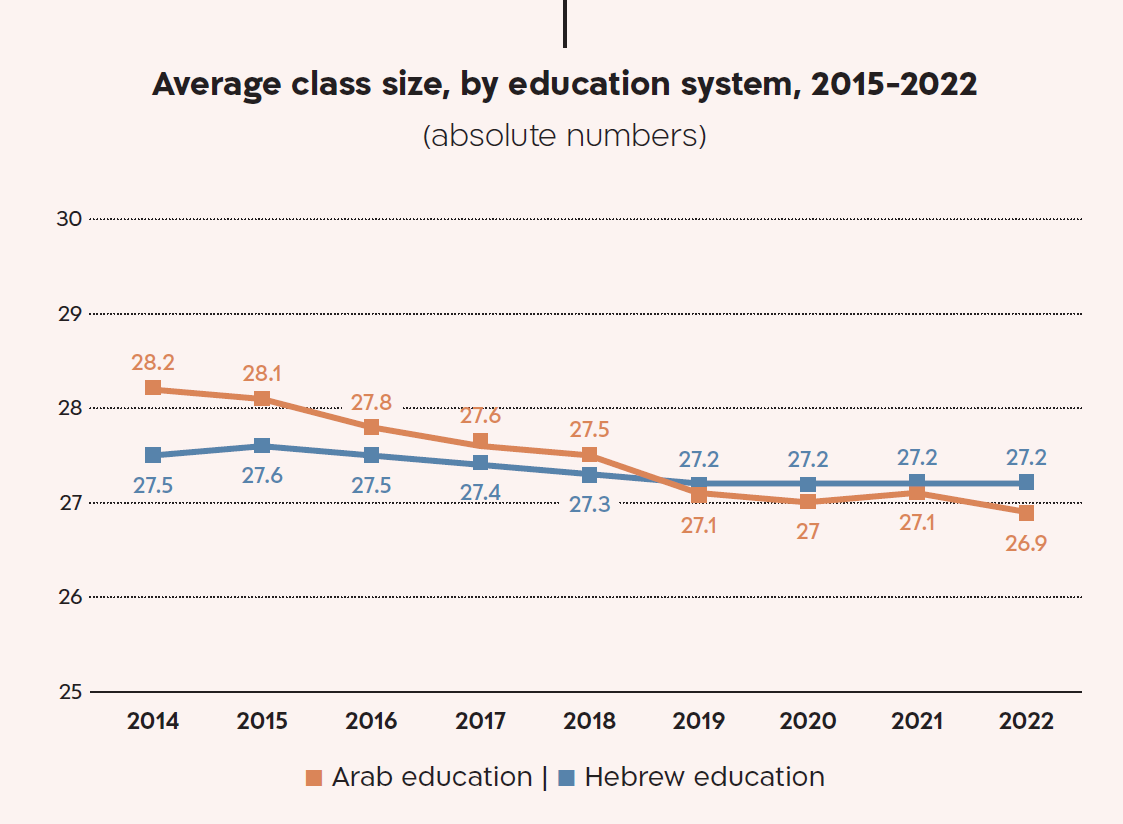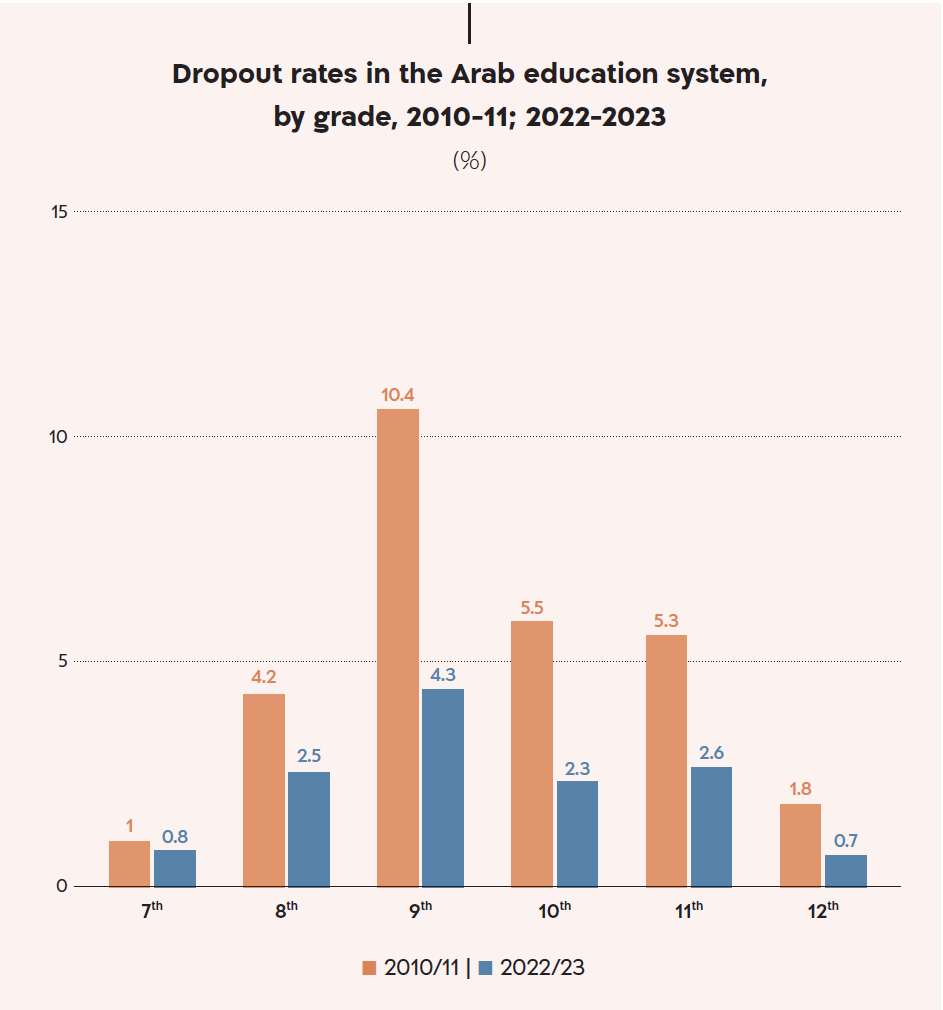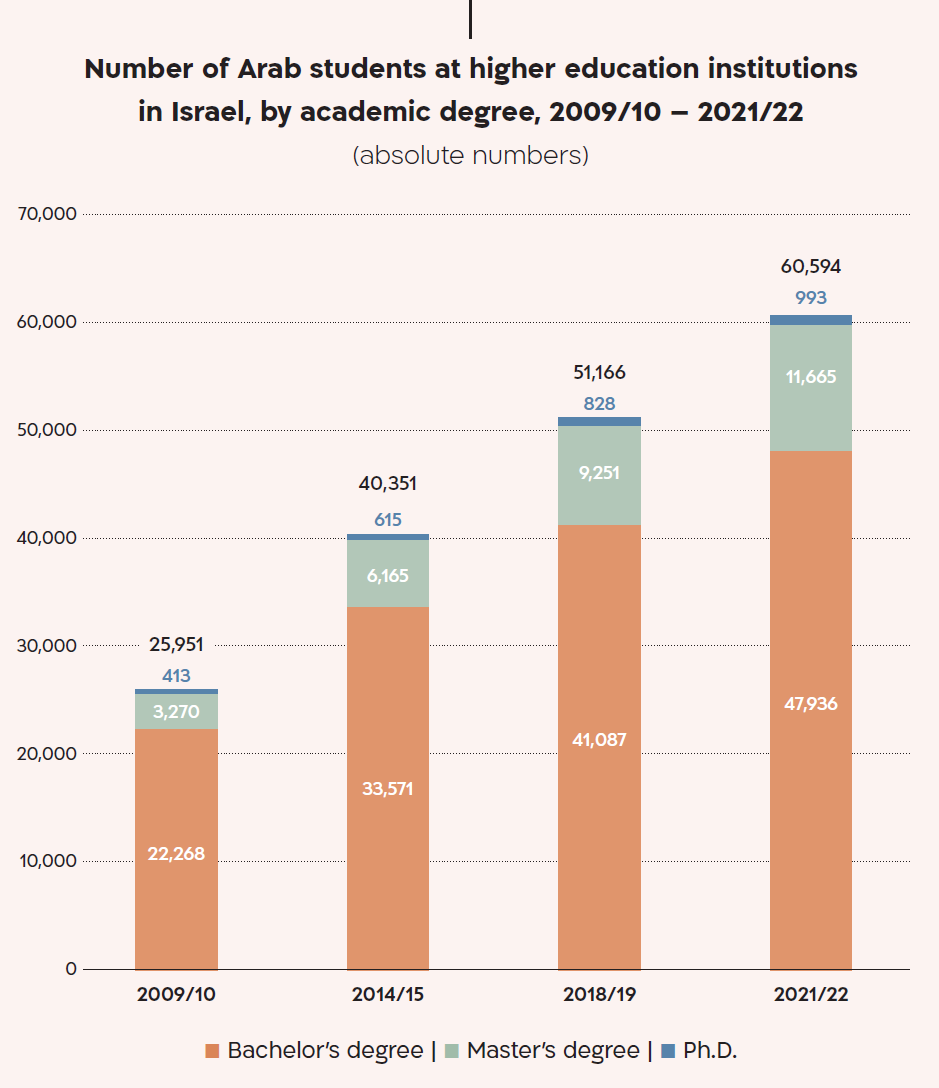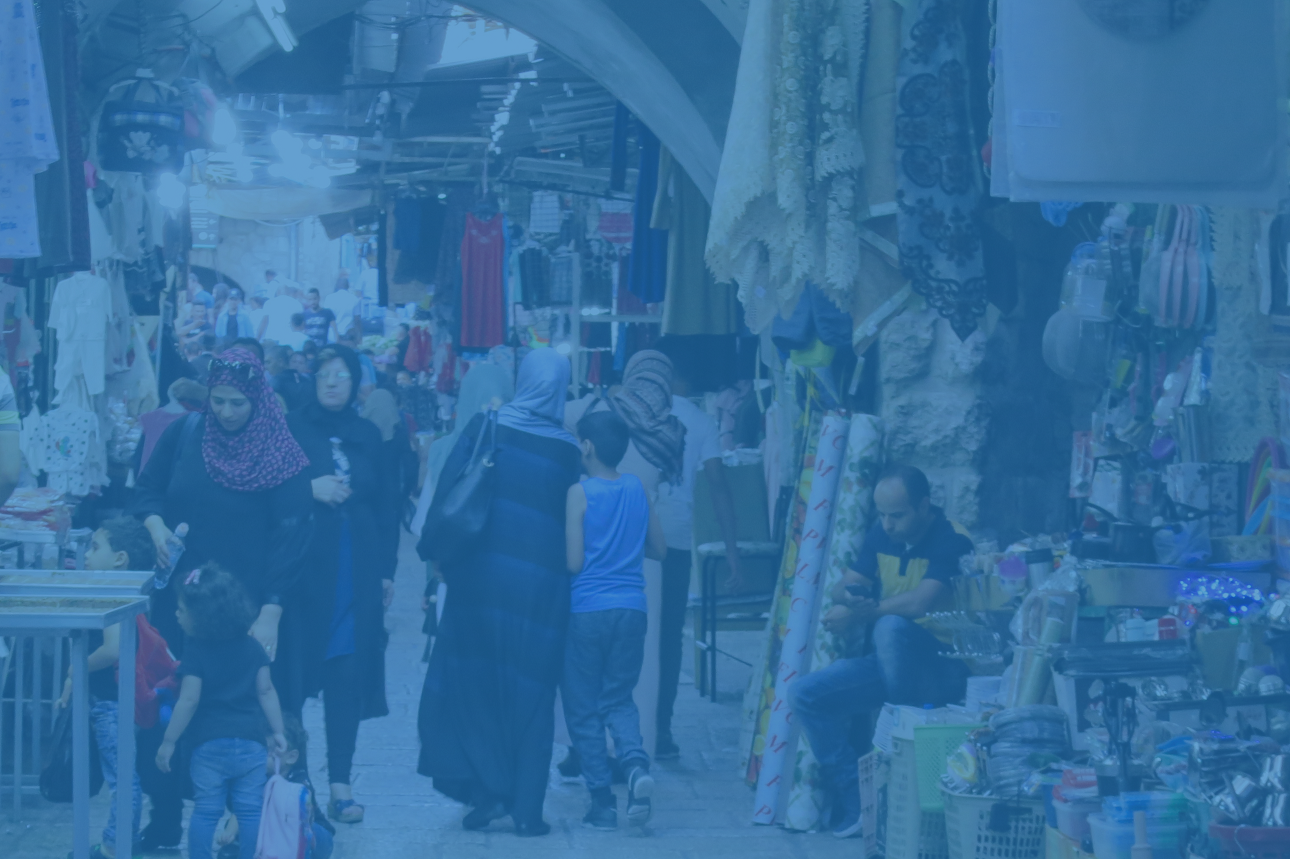Education
Chapter 4
According to data for the 2022–2023 school year, there are 1,145 schools in the Arab education system in Israel, with 18,262 classrooms. The number of students from grades 1 to 12 in the Arab education system totals 449,035.
Up until a decade ago, the average class size in Arab schools was higher than the equivalent average in Jewish schools. Over the years, there has been a steady decline in the average class size in both education systems, though this decline has been steeper in the Arab education system. In the last few years, the average class size in the Arab education system has been lower than the average class size in the Jewish education system.

The matriculation rate (eligibility for a bagrut diploma) in the Arab education system has been steadily climbing, and in recent years the gap between the Arab and Jewish systems has been narrowing. In the 2021–2022 school year, the matriculation rate among Arab students (75.6%) was only slightly lower than that among their Jewish peers (77.2%). In the Arab education system, matriculation rates are particularly high among Druze students, while matriculation rates among Bedouins residing in the Negev are particularly low.

Over the last decade, there has been a decline in dropout rates among students in the Arab education system. The critical stage at which most dropout occurs is at the transition from ninth to tenth grade (from middle school to high school, in Israel), and according to the data, dropout is more common among boys. The overall dropout rate among Arab boys in the transition to 2022–2023 stood at 2.9% (compared with 2.8% among Jewish boys), while the dropout rate among Arab girls was 1.5% (compared with 1.0% among Jewish girls).

Over the last decade, the number of Arab students in institutions of higher education in Israel has risen considerably, as has their relative proportion of the total student population at these institutions. The number and relative share of Arab students at all academic degree levels doubled between the 2009–2010 academic year and the 2021–2022 academic year.











